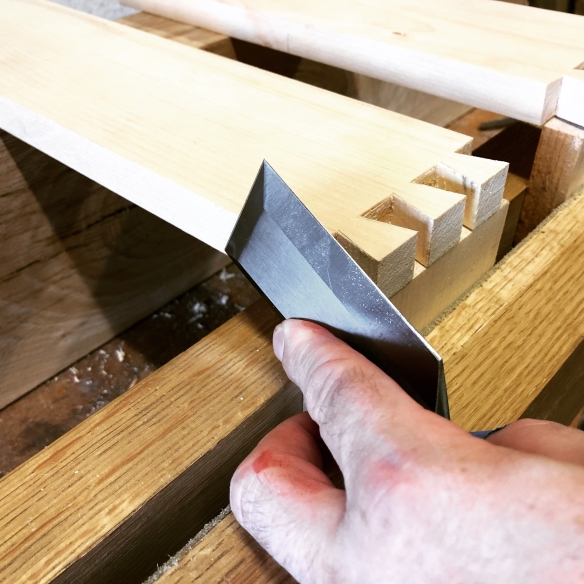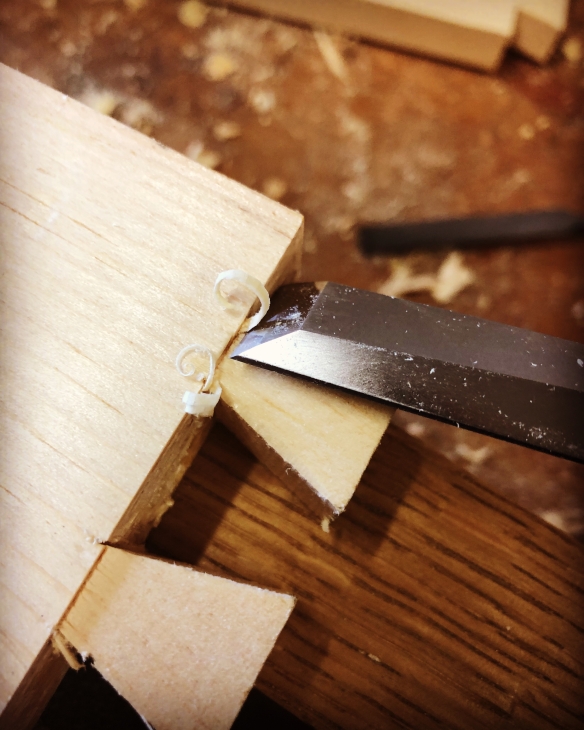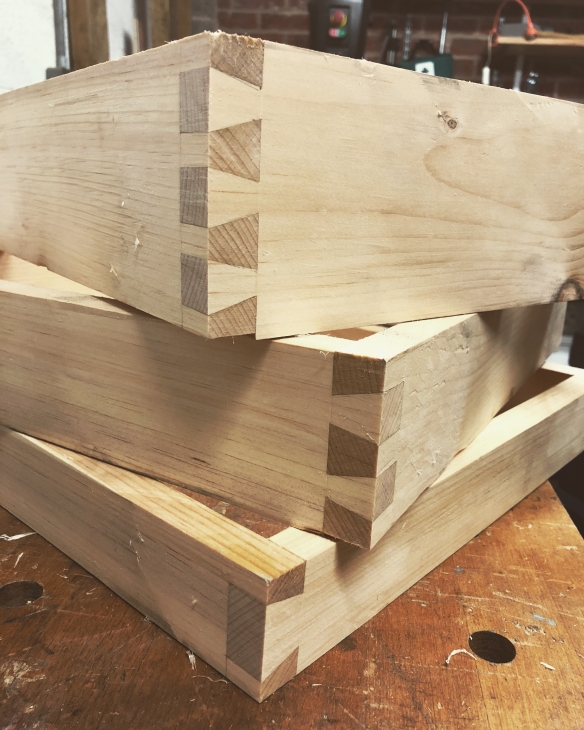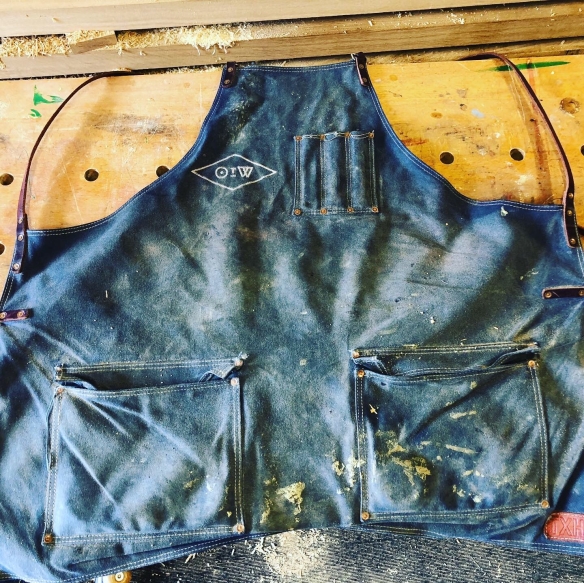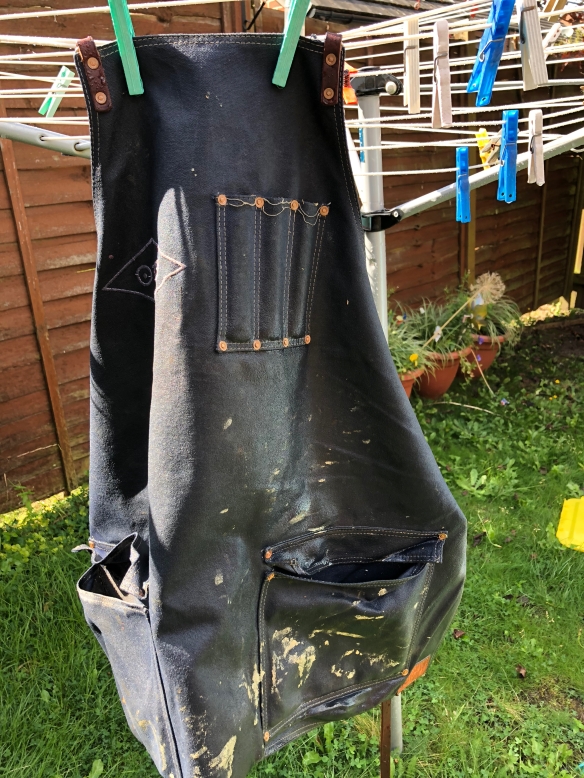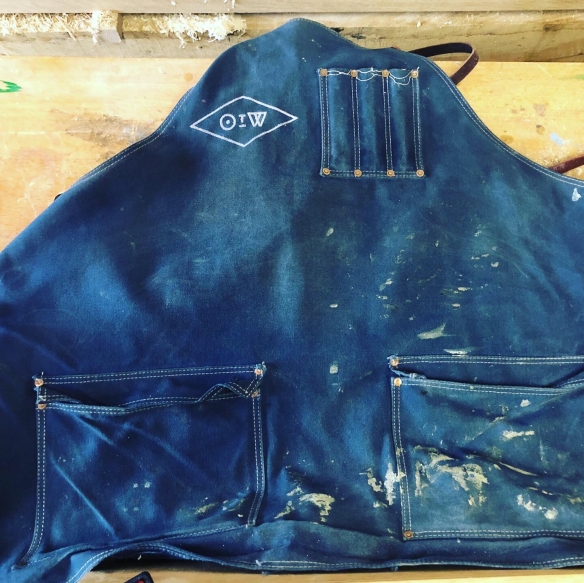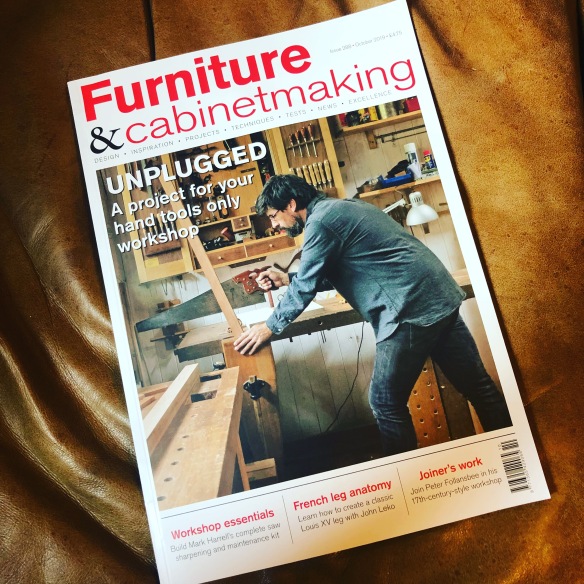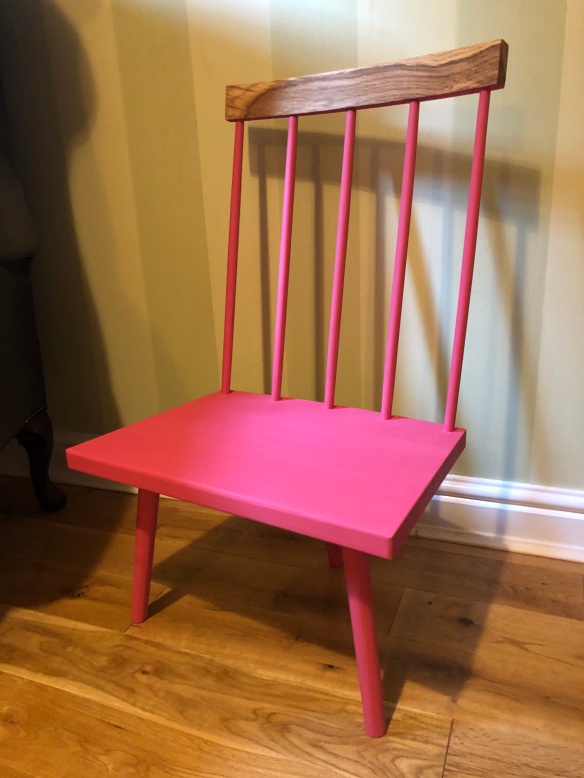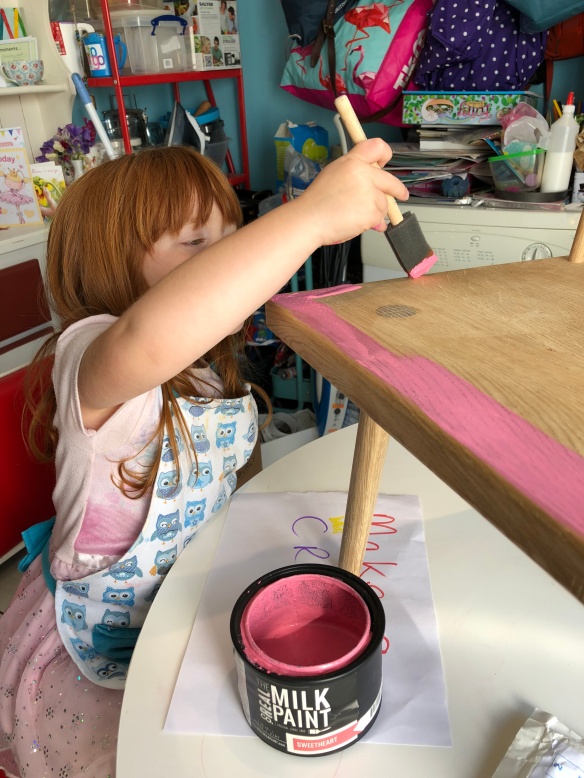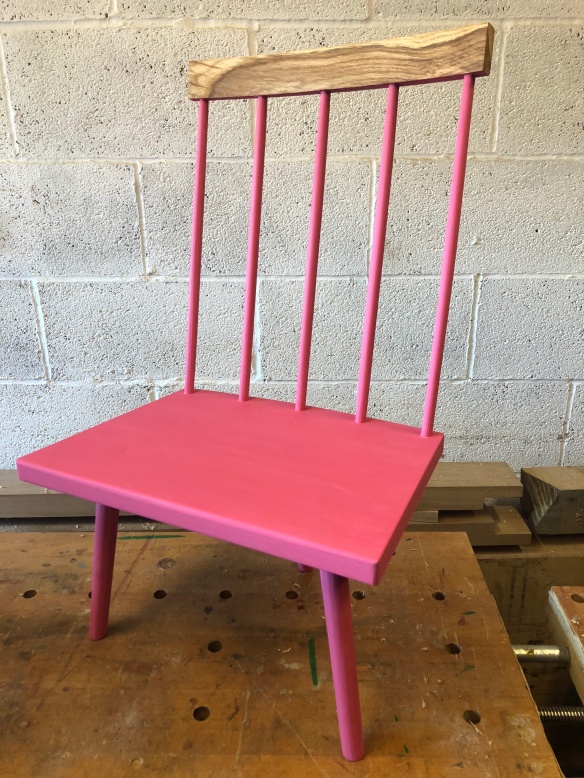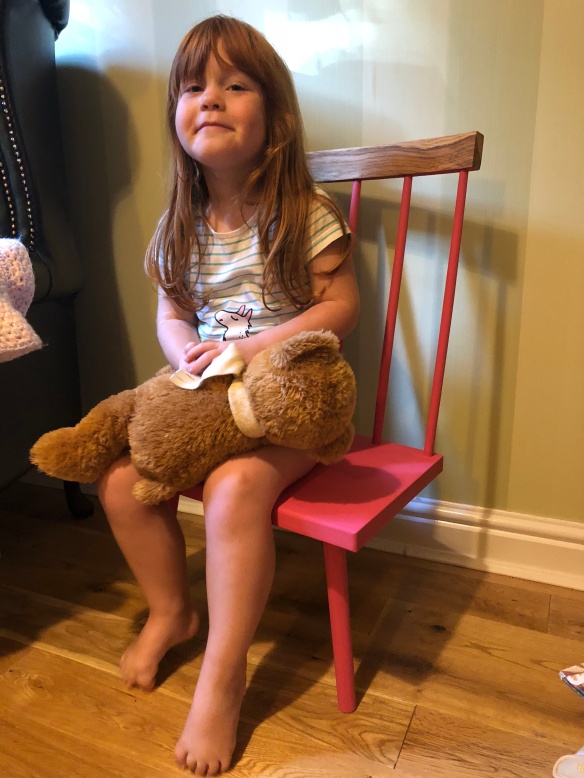
And with that, the Anarchist’s Tool Chest class is done. On one hand it is hard not to feel very proud of the students and all that they have accomplished – all six tool chests were finished by 3pm on the Friday (which i believe is a class record!). On the other, when such an immersive experience ends, it is hard for there not to be a touch of melancholy, and I am reminded of the final day of my own ATC class five years ago.

Of course, there was a lot of work since my last blog post to get the tool chests finished. On Wednesday afternoon we got the lower skirts fitted and glued on. Thursday was then spent cleaning up the exterior of the casework, and fitting the base boards and upper skirts. Which meant that the students got to work with cut nails, tongue and groove boards, and cut more dovetails – plenty of learning opportunities! I found that for glue-ups it worked well to have teams of three do each glue up. So I would work with a pair of students to glue their casework, and those students would then talk the next student through the process while I assisted, and they would in turn help the next student. Three man teams works nicely for casework of this size, and helping their class mates consolidates the learning process for the students (it also helps to prevent the more advanced students from getting too far ahead).

Friday was spent assembling the lids, cutting and fitting the dust seal, and then gluing the lids up. Every person’s dovetails improved over the curse of the week, which was proved by the quality of the dust seals, which are joined with a single tail (much harder than a set of multiple tails). We even managed to find time to bead the upper skirts, and to talk about hardware choices, before everyone loaded their tool chests into their cars and started the long journey home.

I am also headed home, and about to commence the 22 hour trip back to Birmingham. It has been a real privilege to teach at the Lost Art Press store front, and to spend five days working with such a great bunch of students. A final work of thanks to Chris and Megan for not only the invitation to teach, but all of their work preparing stock for the class, and their assistance this week. I will be sad to leave Kentucky (Covington is, as far as I’m concerned, the promised land), but I am looking forward to seeing Dr Moss and the Apprentice after 9 nights away.
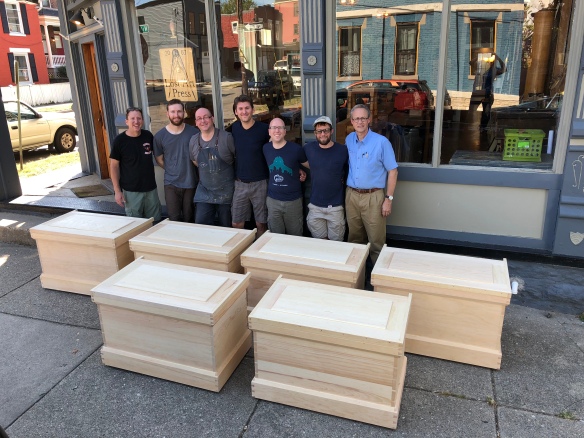





 After 22 hours of travelling I reached Kentucky on Friday evening, and have spent the past couple of days catching up with good friends and seeing some of what Kentucky has to offer. There may have also been plenty of bourbon. Covington is a wonderful place full of gorgeous historic architecture, great places to eat, and within easy striking distance of other great attractions. I’ve sent approximately 27 messages home in the past 48 hours suggesting we move here, so I’m confident that
After 22 hours of travelling I reached Kentucky on Friday evening, and have spent the past couple of days catching up with good friends and seeing some of what Kentucky has to offer. There may have also been plenty of bourbon. Covington is a wonderful place full of gorgeous historic architecture, great places to eat, and within easy striking distance of other great attractions. I’ve sent approximately 27 messages home in the past 48 hours suggesting we move here, so I’m confident that  Shaker chair at a Pleasant Hill
Shaker chair at a Pleasant Hill


